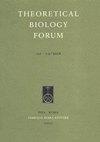莫桑舌鱼毒液中细胞毒素-1与凝乳胰蛋白酶复合物的分子模型。
IF 1.2
4区 生物学
Q4 BIOLOGY
引用次数: 3
摘要
蛇毒是无数具有生物活性的蛋白质和肽。三指毒素在分子结构上高度保守,但有趣的是,它具有多种生物学功能。在进化过程中,在环区引入了微妙的突变和三维结构的微小变化,导致了它们的功能多功能性。细胞毒素1 (Cytotoxin-1, UniProt ID: P01467)从mossambica Naja mossambica中分离得到,显示出抑制凝乳胰蛋白酶和20S蛋白酶体凝乳胰蛋白酶活性的潜力。在目前的工作中,我们描述了一个细胞毒素-1与胰凝乳酶复合物的分子模型,由在线服务器ClusPro制备。分子模型分析表明,Cytotoxin-1 (P01467)通过位于n端附近的环I与chymotrypsin结合。毒素环I的凹侧很好地与蛋白酶的底物结合袋吻合。我们建议Phe10作为配体的专用P1位点。细胞毒素-1 (P01467)是一种有效的20S蛋白酶体抑制剂,可作为潜在的抗肿瘤药物。已经研究了蛇毒细胞毒素作为抗癌剂的能力。细胞毒素-1与胰凝乳酶复合物的分子模型为理解复合物的形成提供了重要的信息。本文章由计算机程序翻译,如有差异,请以英文原文为准。
MOLECULAR MODEL OF CYTOTOXIN-1 FROM NAJA MOSSAMBICA MOSSAMBICA VENOM IN COMPLEX WITH CHYMOTRYPSIN.
Snake venom is a myriad of biologically active proteins and peptides. Three finger toxins are highly conserved in their molecular structure, but interestingly possess diverse biological functions. During the course of evolution the introduction of subtle mutations in loop regions and slight variations in the three dimensional structure, has resulted in their functional versatility. Cytotoxin-1 (UniProt ID: P01467), isolated from Naja mossambica mossambica, showed the potential to inhibit chymotrypsin and the chymotryptic activity of the 20S proteasome. In the present work we describe a molecular model of cytotoxin-1 in complex with chymotrypsin, prepared by the online server ClusPro. Analysis of the molecular model shows that Cytotoxin-1 (P01467) binds to chymotrypsin through its loop I located near the N-terminus. The concave side of loop I of the toxin fits well in the substrate binding pocket of the protease. We propose Phe10 as the dedicated P1 site of the ligand. Being a potent inhibitor of the 20S proteasome, cytotoxin-1 (P01467) can serve as a potential antitumor agent. Already snake venom cytotoxins have been investigated for their ability as an anticancer agent. The molecular model of cytotoxin-1 in complex with chymotrypsin provides important information towards understanding the complex formation.
求助全文
通过发布文献求助,成功后即可免费获取论文全文。
去求助
来源期刊

Theoretical Biology Forum
Agricultural and Biological Sciences-General Agricultural and Biological Sciences
CiteScore
1.10
自引率
0.00%
发文量
0
 求助内容:
求助内容: 应助结果提醒方式:
应助结果提醒方式:


